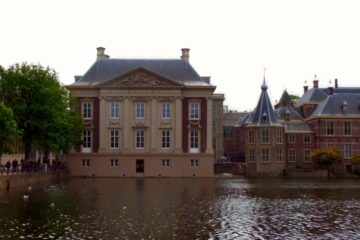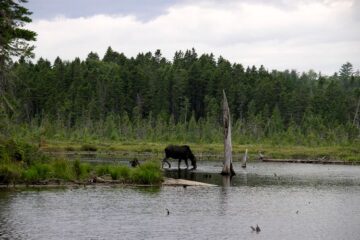
After some serious high water events the Dutch government set up a programme to improve the flood safety along its rivers. Now the measures are being implemented, it is time to monitor the effects and see if additional policy adjustments are needed.
In 1993 and 1995 high water in its rivers threatened significant portions of The Netherlands. This served as a wakeup call for policy makers, that flooding risks not only were posed by the sea. Because there were too much objections against raising the dikes along the rivers, another policy was adopted. Land was reserved for future flooding areas, while at the same time the rivers’ capacity to convey water had to be increased.
The policy is visibly affecting Dutch landscape. For instance, the design of groynes (dams perpendicular to the water flow) has changed, which benefits the shipping industry during periods of low discharge, but also affects the ‘look and feel’ of the river. Side channels have been dug, floodplains redesigned. Naturally, such developments have ecological consequences as well.
‘All these things directly influence the daily work at Rijkswaterstaat’, says Ralph Schielen, who is affiliated with both the University of Twente and Rijkswaterstaat, the infrastructure agency of the Dutch government. ‘In principle we do this in order to improve safety by enlarging the discharge capacity of rivers. However, there are many more considerations, such as costs, which have to be taken into account. Therefore, we are looking for policies that are most of the time self-sustaining. Policies that require constant interventions are less desirable. We are good at finding the right policies, but still there is a lot to learn.’
Take the use of floodplains as providing extra discharge-capacity for superfluous river water. The pace of water flowing in and out of the floodplains is largely determined by the vegetation. The question is to what extent nature may follow its course without endangering the function of the floodplain from the perspective of water management.
River Care
The River Care research programme was designed to investigate the effects of the policy changes, which in many cases are too complex to predict precisely. ‘We gather lots of different data’, says associate professor Denie Augustijn. ‘Satellite images are important, because they reach back many years. We also have flora and fauna databases going back to 1990. Apart from that we do our own observations and measurements in the field, for instance on elevation, moisture and vegetation.’
Schielen adds: ‘In some places we may install webcams to get a close up look at the developing landscape. This not only serves our own purposes, but may be of interest to a general audience as well. Public awareness means a lot to us.’
Apart from government bodies and research institutions, Dutch engineering consultancies also participate in the projects. After all, they are renowned worldwide for their cutting edge knowledge on water engineering – and they are determined to remain at the forefront. One of the programme’s focusses is the ‘virtual river’, a so called serious game which models a river landscape and allows stakeholders to propose policies, the effects of which become immediately visible in the model. Because it can model any lowland river, this game is a potential export product.
Uncertainties
Of course, there are limitations to the models, as experience has shown. For instance, in the past the river bed was modelled as a flat surface, whereas in reality dunes form, slowing down the current and hence rising the water to levels higher than the model predicted. Once the model took this into account, it appeared the predictions were sometimes too high, because stronger currents flatten the dunes. These may be small adaptations in a model, but they matter a lot, because the necessary height of dikes depends on expected water levels. The consequences in terms of safety and costs are considerable.
‘Despite all the knowledge we have and are acquiring, we must never forget that uncertainties remain’, Augustijn warns. ‘Everybody knows how difficult it is to predict the weather even for the next few days. For us the weather prediction is only one of the inputs for our models. And we’re not only expected to predict water levels for the coming days, but for the coming century as well. So, an extensive and careful review of river policies is essential. Actually, I wouldn’t mind some really high water one of these days, so we can calibrate our models.’





